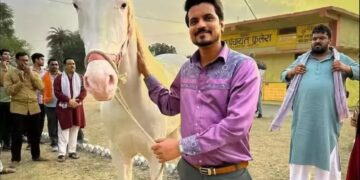New Delhi, June 29, 2025 — India, often called the world’s largest democracy, is facing a serious challenge to press freedom as journalists continue to face violence, harassment, and legal threats. Recent incidents and reports highlight the dangers journalists encounter while reporting on sensitive issues like corruption, politics, and human rights, raising concerns about their safety and the state of free speech in the country.
A Dangerous Profession India has become one of the most dangerous places for journalists. According to the Committee to Protect Journalists (CPJ), at least 28 journalists were killed in India between 1992 and 2021 due to their work, with many cases unresolved. In 2022 alone, 194 journalists were targeted, including seven women, facing attacks from state agencies, criminals, and political groups, as reported by the Rights and Risks Analysis Group (RRAG). Jammu and Kashmir and Telangana saw the highest number of incidents, with 48 and 40 cases, respectively. In early 2025, the murder of freelance journalist Mukesh Chandrakar in Chhattisgarh shocked the nation. Chandrakar, who ran a YouTube channel called *Bastar Junction*, was killed days after reporting on corruption in the road construction business. His death, marked by severe injuries, underscored the risks faced by local reporters in conflict zones like Bastar, where Maoist insurgency adds to the dangers. Four suspects have been arrested, but the case reflects a broader pattern of violence against journalists.
Targeted for Telling the Truth Journalists in India face threats from multiple fronts: government authorities, political groups, and criminal networks. In Kashmir, reporters are often detained under harsh laws like the Jammu and Kashmir Public Safety Act, which allows arrests without evidence. In 2022, journalists Fahad Shah, Aasif Sultan, and Sajad Gul were re-arrested under this law after being granted bail in other cases. Frequent internet shutdowns in the region—106 across India in 2021, with 85 in Kashmir—further hinder reporting. Online harassment is another growing threat, especially for women journalists. The CPJ reported that Muslim women journalists, like Rana Ayyub, have faced severe abuse, including death and rape threats, often fueled by political supporters and nationalist groups. A 2020 UNESCO survey found that 73% of women journalists worldwide, including in India, experienced online violence.
Legal and Political Pressures The Indian government has been criticized for using laws like the Unlawful Activities (Prevention) Act (UAPA) to silence journalists. Since 2014, at least 15 journalists have been charged under this anti-terrorism law, according to the International Journalists’ Network. In 2020, journalist Siddique Kappan was jailed for two years without trial while covering a high-profile case in Uttar Pradesh. Legal harassment, including sedition charges and defamation lawsuits, is often used to intimidate reporters. Media ownership also threatens press freedom. Large corporations with ties to political leaders control much of India’s media. For example, Mukesh Ambani, a close ally of Prime Minister Narendra Modi, owns over 70 media outlets, reaching 800 million people. This concentration, along with the rise of “Godi media” (pro-government outlets), has reduced independent reporting.
A Call for Change International organizations like Reporters Without Borders (RSF) and Human Rights Watch have urged India to protect journalists and ensure justice for attacks. India’s ranking in the 2024 World Press Freedom Index dropped to 159 out of 180 countries, a steep decline from 105 in 2009. RSF has called the situation an “unofficial state of emergency” for the media since Modi’s government took power in 2014. The International Federation of Journalists (IFJ) has pushed for a Journalist Protection Act in India to provide stronger safeguards. After the murder of journalist Dharmendra Singh Chauhan in Haryana in May 2025, the IFJ and Indian Journalists Union demanded swift investigations and accountability. “Such acts of violence cannot be tolerated in a democratic society,” the IFJ stated.
Hope Amid Challenges Despite the dangers, many Indian journalists continue to report fearlessly. Outlets like *Khabar Lahariya*, run entirely by women from rural and minority backgrounds, show the resilience of independent media. However, without stronger legal protections and political will to address impunity, the risks remain high. As India grapples with these challenges, the international community is watching closely. Ensuring journalist safety is not just about protecting individuals—it’s about safeguarding democracy and the right to information for millions.
Sources: Committee to Protect Journalists, Reporters Without Borders, Rights and Risks Analysis Group, The Guardian, Deutsche Welle







































